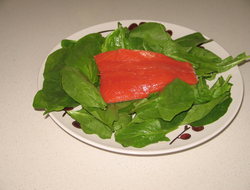Fat: You can't be healthy without it!
Published: March 25, 2021
Fat is good.....bad for you?
You have probably heard at some time that too much fat is bad for you and you may also have heard that some fat is good for you and even essential for good health.
You may have been warned to avoid certain types of fat, and advised to enjoy other fats. And the benefits of low fat diets continue to be contested.
Nutrition fact labels show you how much fat, saturated fat and trans fat that are in food products so that you can make healthy choices, but what do the different fats do?
What are MUFAs and PUFAs? Where do they come from? Why do you need them?
Next to water, fat is the second major component of a healthy body.
Fat can be stored very easily in your body and provides you with a source of energy whenever you need it. But fat has many other important functions in your body.
Most of the fat that you consume is used as energy as your body can synthesise all the different fats it needs except for two essential fats.
Different types of fat in the food you eat may have beneficial or adverse health effects.
Knowing about the different types of fats in your food and what they do in your body can help you make more informed choices about the food (fats) that you consume.
You have two sources of fat: dietary fat in the food and beverages you consume and fat that is synthesised within your body.
Fat is the general name given to a family of nutrients chemically identified as lipids which contain carbon, hydrogen and oxygen atoms.
Link to the full article to learn more about:
- Fatty acids
- Triglycerides
- Essential fatty acids
- Trans fatty acids
- Phospholipids
- Cholesterol
References
1.
Whitney, E. & Rady Rolfes, S. (2005). Understanding Nutrition. Belmont, CA: Thomson Wadsworth
2.
Horton et al. (2002). Principles of Biochemistry (3rd Ed.). Upper Saddle River, NJ. Prentice Hall
3.
Gropper, S.S., Smith, J.L. & Groff, J.L. (2005). Advanced Nutrition and Human Metabolism (4thEd.). Belmont, CA: Thomson Wadsworth.

